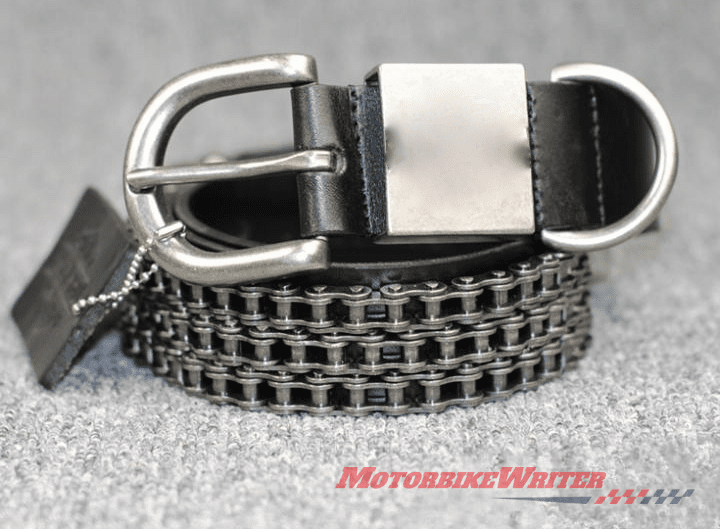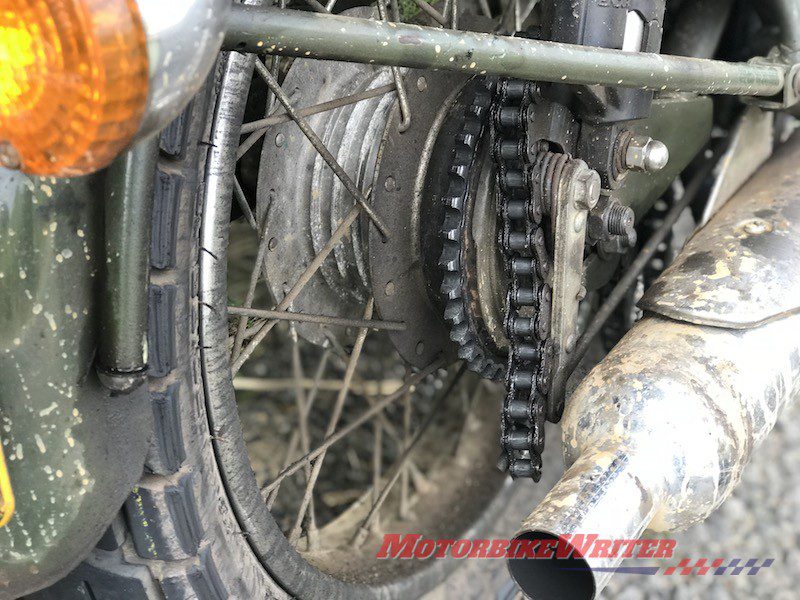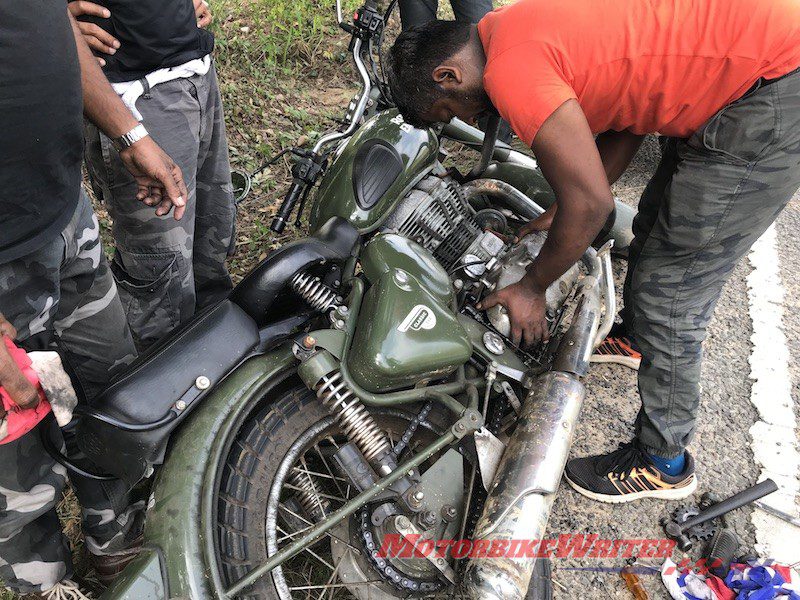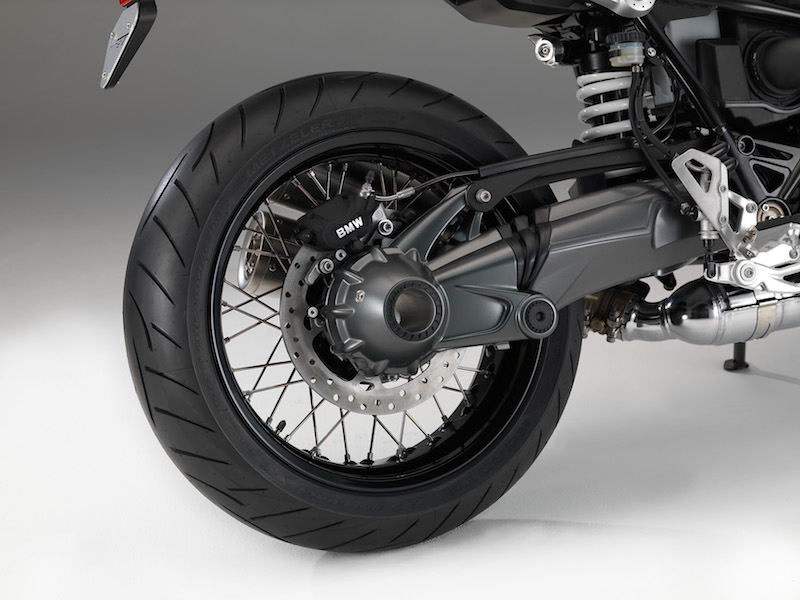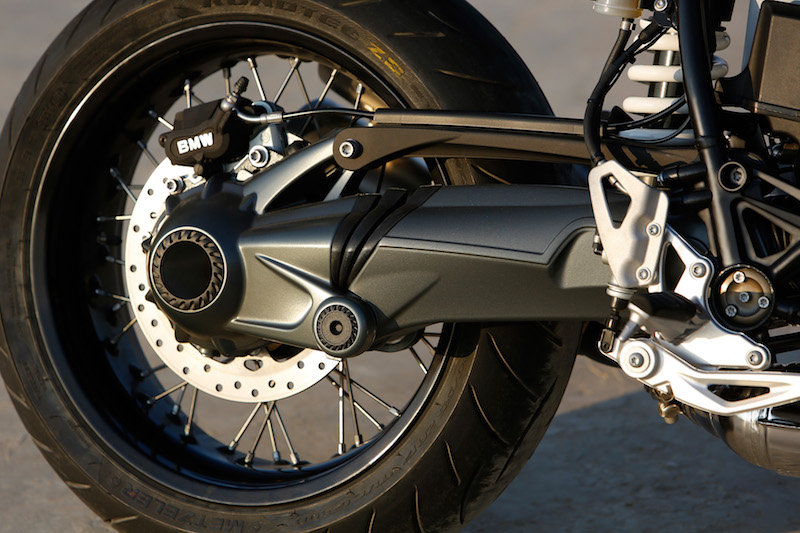What is the best transmission for a motorcycle: chain, belt or shaft drive? Some say motorcycle riders only wear black t-shirts and jackets because old chains used to cover them in oil.
That could also be why BMW riders with shaft drive tend to wear lighter and brighter colours like scooter riders with their fully enclosed drive systems.
Harley-Davidson riders still cover themselves in black, probably because old Harleys had two oily drive chains: One for the primary drive between the motor and gearbox and a second driving the rear wheel.

Early Harley-Davidsons were fitted with two systems to oil the chain while riding. One was designed to spray oil on to the chain and the other dripped oil on to the chain.
With all that oil being fed on to a circulating chain under the bike, the rider would end up with a spray of oil on their back.
Thus, black quickly became the colour of choice to hide the dark oil spray … not to cultivate a tough image!
When the Shovel engine appeared in the 1960s, Harley Davidson re-designed the oil system, and plugged the hole in the primary cover to eliminate the oil leak. Oil pressure was used to recycle the oil back into the sump for filtering.
From chain to belt
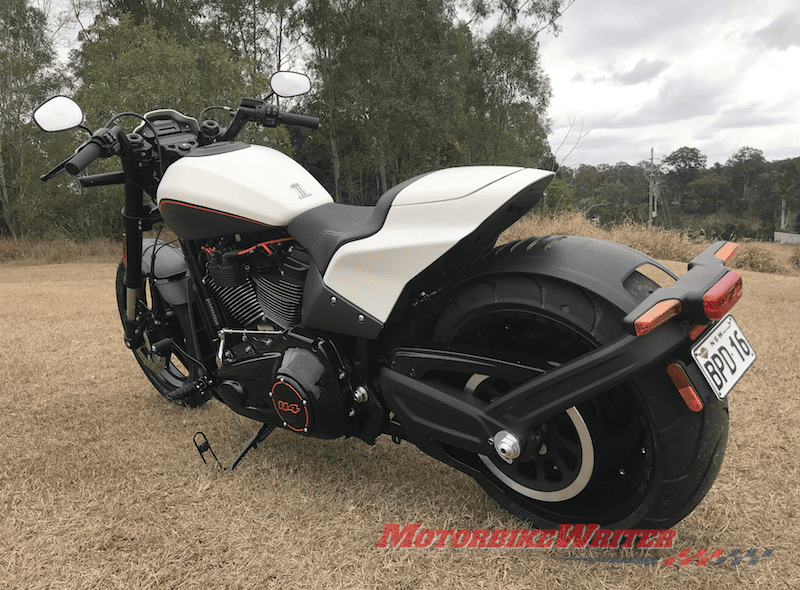
Harley transitioned its product range from chain to belt drive between 1980 and 1992.
Compared with a chain, belts are cleaner, lighter, cheaper, smoother, quieter and require less maintenance or adjustment than chains.
Early belts were not very reliable and lasted as little as 20,000km.
However, they now last 70,000-120,000km or higher, depending on the use of the motorcycle.
Kevlar and carbon fibre belts extended the life of the drive belt so it can last the life of the motorcycle.
That makes them cheaper in the long run.
And if they fail, they don’t tend to cause catastrophic damage to bike and rider like a broken chain.
Belts are now used by most cruisers, many scooters, some old Buells, some low-powered motorcycles and some BMW F models.
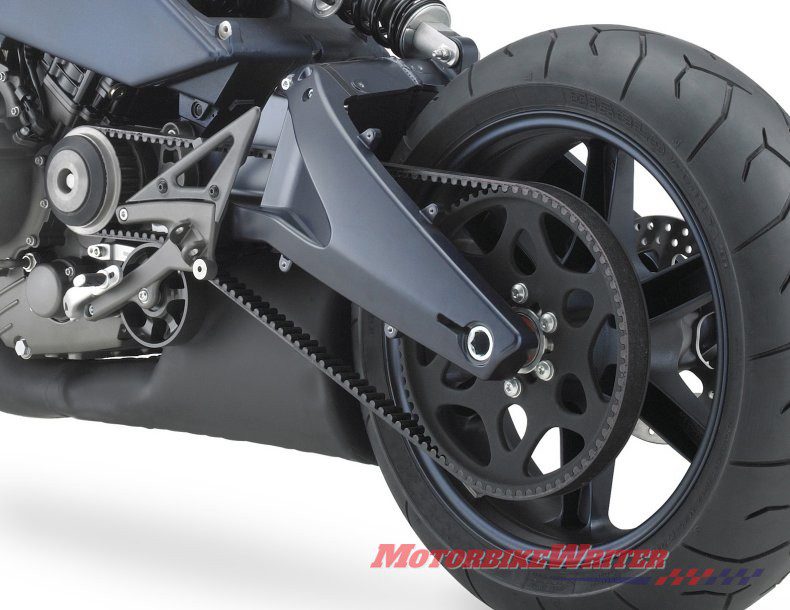
Why chains?
So why use a chain in the first place? Sprockets. Front and rear sprockets allow quick and accurate gearing changes.
Chains are the most common motorcycle drive system because they have more strength and can be used effectively in high-powered bikes.
Click here to find out how to clean and maintain your chain for a long life.
You can also adjust the gearing with chain drive. Some custom chopper builders even switch back from belt to chain because it’s easy to change gearing when fitting different gearsets and playing with different size motors.
Belts don’t tolerate sudden torque loadings from hard acceleration and wheelies like chains. Have you tried to wheelie a Harley?
However, broken chains can cause huge damage to your bike and injury to the rider if they break at high speed.
If they do fail, with the right tools, you can actually fix one at the side of the road with a new master link and be on your way again.
Riding Royal Enfields in Sri Lanka, two of our fellow riders suffered broken chains which were fixed within half an hour.
Try that with a broken belt or shaft!
However, chains require a lot of maintenance: lubrication, cleaning and adjusting.
Click here to see how to lengthen the life of your chain.
Drive shaft
Shaft drive consists of a shaft connected to a gear inside the gearbox to another gear inside a hub on the rear wheel.
BMW has a used them since the R32 in 1923 and Moto Guzzi has used them since the 1960s.
Many other manufacturers, mainly Japanese, have used shafts over the years for touring and cruisers models. BMW even use them to success on their GS off-road models.
Shaft drive is clean, robust, reliable and has low maintenance.
Note we said “low maintenance”, not no maintenance. They do require regular lubrication servicing.
On the negative side, a drive shaft is heavy, expensive and if it does fail there is no quick or cheap fix.
Transmission troubles
So, how do you know if your drive belt or chain needs replacing or your shaft is worn?
Generally, a drive belt will wear if not aligned properly, is not adjusted correctly (too loose or tight) or is not kept free of road dirt and rocks etc.
Drive belts are made of a fairly tough Kevlar/rubber composite, but can shed teeth as they age.
Even though they can last a long time, it is best to check your owner’s handbook for the correct replacement interval.
Chains also wear out, but because they are made of metal, they also wear out the sprocket teeth.
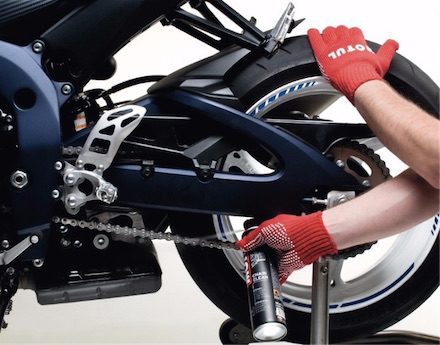
So you may not only have to replace the chain, but also the sprockets.
Also look for rust and if your bike keeps slipping gears, it probably needs replacing.
Signs of a worn shaft are noises, vibration and metal shavings in the oil when it is being replaced.
Also look for any leaks around the seals and a lot of “play” in the rear wheel when in gear.
If you believe your shaft is wearing out, see your mechanic as fixing a worn shaft is very technical.
Don’t leave an inspection of your chain, belt or shaft until you are on a Sunday ride and it breaks.
(Thanks to co-contributor Steve Pearce)


